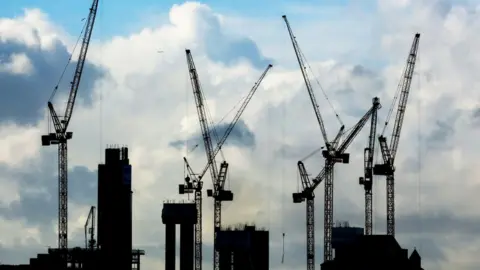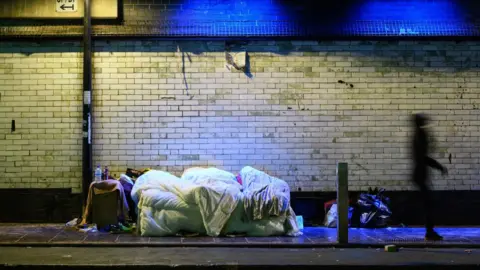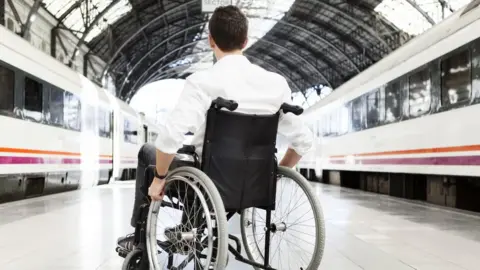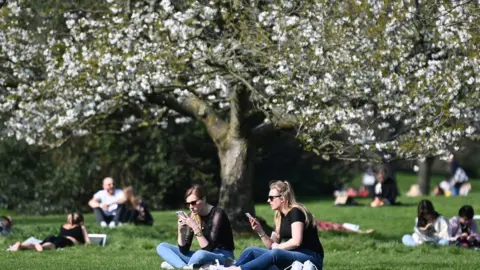London elections 2022: What do borough councils do?
 Getty Images
Getty ImagesFour years on since the last local elections, voters across London will get the chance to elect their local councillors and mayors on 5 May.
The elections will decide who runs local services - such as schools, libraries and bin collections - in all 32 London boroughs.
While the mayor of London sets an overall vision for the capital, councils spend more than £12bn a year running local services.
Approximately six million people will be able to vote for nearly 2,000 seats on local councils.
Council structures
Each London borough council must follow one of two possible models. These are:
- A leader elected by the largest party or coalition on the council, similar to the way a prime minister is selected. The leader then decides on the deputy leader, size of the cabinet and appoints cabinet members. The mayoral function in these councils is a ceremonial role. This is the structure used by the majority of councils in London
- A mayor directly elected by local voters. He or she then chooses a cabinet of no more than 10 councillors. Only five of London's councils use this system: Croydon, Hackney, Lewisham, Newham and Tower Hamlets
 PA Media
PA MediaHousing
One in nine homes in London is owned and maintained by the local council - some 400,000 properties.
Council homes are normally social rent or some form of affordable housing, to help local residents on lower incomes stay in the area.
Councils have a legal responsibility to meet the housing needs of its population. They can do this through approving or denying planning permission for new homes.
The responsibility for setting housing targets is shared with the mayor of London who has the power to veto large developments, or those being built on the green belt.
 Getty Images
Getty ImagesCouncils also have a duty to take "reasonable steps" to prevent local residents from becoming homeless or help them secure accommodation.
As of 2021, there were 295,000 people on the housing waiting lists of London councils.
Local land charges and property searches are also run by councils.
Rubbish and recycling
One of the council's key responsibilities is running local waste collection and street cleaning. Councils are often judged by their ability to "take out the bins".
In London, many authorities pool bin collection and recycling services with nearby councils.
Other environmental health services, including food safety and pest control, are also run by local councils.
Children's services
Councils in London fund and provide oversight to local state schools, but not academies or free schools.
The money for schools comes directly from central government based on the number of pupils per school and building maintenance costs.
If a child is suspected of being abused or neglected, councils have a duty to investigate. Under extreme circumstances, the council can step in and remove a child from a household.
Councils are also responsible for fostering services and adoption in the borough.
 Getty Images
Getty ImagesSocial welfare
London councils pay about £260m a year so that one million older and disabled Londoners can travel for free on buses, Tubes and trains.
Councils run local services for older people including delivering meals, running nursing homes and providing in-house care.
Services for people with physical disabilities, learning disabilities or mental health problems are run by the council.
This includes supporting people with disabilities to remain in work.
Public spaces
Most local recreation and sport facilities, including leisure centres, are run by London's councils.
Nearly all open spaces such as parks, playgrounds and allotments are also managed by local authorities. Nevertheless, eight of London's largest parks, including Hyde Park and Kensington Gardens, are run by Royal Parks.
 EPA
EPACouncils also fund and run local libraries and information services. The capital's pubs, clubs and restaurants are also licensed by local councils.
They have a role in promoting local culture and heritage, including museums and galleries.
Life, death and taxes
Registration of births, deaths and marriages are recorded by local councils. They also run local cemetery, cremation and mortuary services.
Councils set local council tax rates on domestic properties. Across London, the average area Band D council tax in 2021-22 was £1,622.
They are restricted to a 5% increase on council tax each year. This is made up of a 2% council tax rise and an additional 3% for adult social care.
Councils can technically ask to charge more than this, but they have to hold a referendum with residents first.
Business rates, which are set by central government, are collected by local councils who get to keep half of the income. The other half goes to central government to fund local government grants.
Parking enforcement is also managed by local councils.
